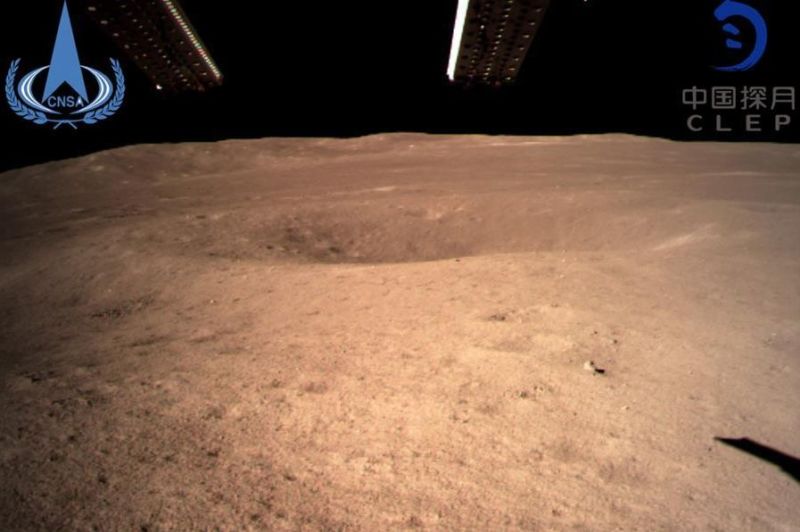
Declaring that it has opened a new chapter in lunar exploration, the China National Space Administration announced late Monday night that its Chang'e-4 lander had safely set down on the far side of the Moon. No spacecraft has ever made a soft landing there.
According to state media, a Beijing-based control center commanded the spacecraft to begin the landing procedure at 9:15pm ET Monday (10:15am, Tuesday, local time), from an altitude of 15km above the lunar surface. During an 11-minute descent, Chang'e-4 slowed its speed from 1.7 km/s to nearly zero before it landed in the Von Karman Crater in the South Pole-Aitken Basin. This is in the mid-southern latitudes of the Moon on its far side; it should offer important scientific information about Earth and the early Solar System.
The 1.2-ton lander is made from backup components of the Chang’e-3 mission, which China's space program landed on Mare Imbrium on the near side of the Moon five years ago. Shortly after landing, Chang'e-4 returned a photo of the lunar surface by way a relay satellite in lunar orbit, named Queqiao, meaning Magpie Bridge.
Soon—if not already—the lander will deploy a rover named Yutu II (Jade Rabbit II). The 140kg rover will collect high-resolution images, and Chinese scientists designed it to study the lunar surface and area just beneath the surface, as well as the radiation environment on the far side of the Moon.
Big first step
This landing marks an important step in space for China. This represents a true "first," as no country has ever reached the far side of the Moon, where there is no means of direct communication with Earth. Additionally, the data collected by Chang’e-4 and the Yutu II rover will inform China's lunar exploration program, which seeks to send taikonauts to the lunar surface by around 2030.
Shortly after the landing, NASA administrator Jim Bridenstine noted the accomplishments of the Chinese space agency on Twitter: "Congratulations to China’s Chang’e-4 team for what appears to be a successful landing on the far side of the Moon. This is a first for humanity and an impressive accomplishment!"
The success by the Chinese agency comes as NASA remains barred from working with China on spaceflight activities. This block was put in place by former US Rep. Frank Wolf and supported through the appropriations process by Rep. John Culberson. Both men are now out of office, so there is a chance the prohibition could be reviewed. Nevertheless, there are considerable concerns about technology transfer as a part of any cooperation with China.
It is also notable that China's state news service provided no live coverage of Monday night's landing attempt. Many of the country's launches—and more difficult efforts in space—are only reported after the fact, when they are successful. This echoes the Soviet approach during the space race in the 1960s, when many of their spaceflight activities took place covertly, while NASA had its successes and failures covered in real time.
This may reinforce the concern of some lunar scientists and spaceflight experts, who warn that if we want to see the Moon developed under Western norms of freedom and openness, then NASA and US businesses had better lead the return and development of the Moon during the coming decade.
https://arstechnica.com/science/2019/01/china-makes-history-by-landing-on-the-far-side-of-the-moon/Bagikan Berita Ini














0 Response to "China makes history by landing on the far side of the Moon - Ars Technica"
Post a Comment